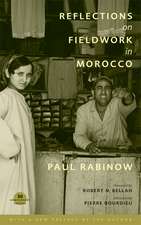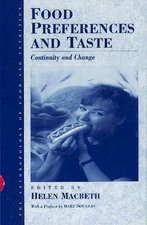Space Modernization and Social Interaction: A Comparative Study of Living Space in Beijing
Autor Qingqing Yangen Limba Engleză Hardback – 9 oct 2014
| Toate formatele și edițiile | Preț | Express |
|---|---|---|
| Paperback (1) | 381.00 lei 6-8 săpt. | |
| Springer Berlin, Heidelberg – 23 aug 2016 | 381.00 lei 6-8 săpt. | |
| Hardback (1) | 388.13 lei 6-8 săpt. | |
| Springer Berlin, Heidelberg – 9 oct 2014 | 388.13 lei 6-8 săpt. |
Preț: 388.13 lei
Nou
Puncte Express: 582
Preț estimativ în valută:
74.28€ • 77.11$ • 61.94£
74.28€ • 77.11$ • 61.94£
Carte tipărită la comandă
Livrare economică 22 martie-05 aprilie
Preluare comenzi: 021 569.72.76
Specificații
ISBN-13: 9783662443484
ISBN-10: 3662443481
Pagini: 110
Ilustrații: XVII, 152 p. 13 illus., 11 illus. in color.
Dimensiuni: 155 x 235 x 15 mm
Greutate: 0.42 kg
Ediția:2015
Editura: Springer Berlin, Heidelberg
Colecția Springer
Locul publicării:Berlin, Heidelberg, Germany
ISBN-10: 3662443481
Pagini: 110
Ilustrații: XVII, 152 p. 13 illus., 11 illus. in color.
Dimensiuni: 155 x 235 x 15 mm
Greutate: 0.42 kg
Ediția:2015
Editura: Springer Berlin, Heidelberg
Colecția Springer
Locul publicării:Berlin, Heidelberg, Germany
Public țintă
ResearchCuprins
Dramatis Personae: The main characters met in the book.- Introduction.- Chapter 1 ‘Trembling in another’s fulfillment’: The space of the Hutong and its significance to Mr. Yang.- Chapter 2 ‘Peace in the noise’: Harmony, Face and Reciprocity in Hutong spaces.- Chapter 3 ‘Enter the Solemnity’: Social Space in the High-rise Apartment.- Chapter 4 ‘Things Have Been Socialised’: The Variable Allocations of Value in the City.- Chapter 5 ‘Out of Space, Out of Speech’: The Relationship Between Language and Space in the City.- Chapter 6 ‘Soft and Hard, Bendy and Fixed, Vase and Funnel’: The Experience and Conceptualization of Living Space in the City.- Chapter 7 ‘Urbanised by Specialised’: The Decrease in ‘Overlapping Space’ in the City.- Conclusion.- Bibliography.
Textul de pe ultima copertă
This book concerns the Beijing Hutong and changing perceptions of space, of social relations and of self, as processes of urban redevelopment remove Hutong dwellers from their traditional homes to new high-rise apartments. It addresses questions of how space is humanly built and transformed, classifi ed and differentiated, and most importantly how space is perceived and experienced. This study elaborates and expands Lefebvre’s “trialectic” of space on a theoretical level. The ethnography presented is a conversation with Tim Ingold’s argument about “empty space”. This research employs the ethnographic technique of participant-observation to secure a finely textured, detailed and micro-social account of local experience. Then, these micro-social insights are contextualized within macro-social structures of Chinese modernism by speaking to geographical concerns, orientalism and history.
Qingqing Yang has a captivating narrative style; its deceptively light personal touch causes the reader to see as she does and to learn with her, and we come to appreciate the habitual round of Beijing life amid forces of radical change.
From the Foreword, by Nigel Rapport, Professor of Anthropological and Philosophical Studies, University of St. Andrews Space.
Modernization and Social Interaction is a truly intriguing and original piece of work. The aim of the book is to compare conceptualizations of living space in Beijing: on one hand in traditional Chinese courtyards referred to as Hutong, and on the other hand in modern high-rise apartments. This is prompted by a dramatic relocation by the government of residents from Hutong to apartments as a part of a city-planning scheme, in which some of the Hutongs are replaced by new wide roads. Other Hutongs aremaintained and equipped with modern facilities such as natural gas pipes in kitchens and bathrooms. It was in the latter type of traditional Hutong with modern facilities, that Yang did her main fieldwork for altogether fourteen months between July 2009 and September 2012. She also spent four months in a high-rise apartment compound outside the city. It is obvious that her fieldwork was most successful.
From Professor Helena Wulff, Stockholm University.
Qingqing Yang has a captivating narrative style; its deceptively light personal touch causes the reader to see as she does and to learn with her, and we come to appreciate the habitual round of Beijing life amid forces of radical change.
From the Foreword, by Nigel Rapport, Professor of Anthropological and Philosophical Studies, University of St. Andrews Space.
Modernization and Social Interaction is a truly intriguing and original piece of work. The aim of the book is to compare conceptualizations of living space in Beijing: on one hand in traditional Chinese courtyards referred to as Hutong, and on the other hand in modern high-rise apartments. This is prompted by a dramatic relocation by the government of residents from Hutong to apartments as a part of a city-planning scheme, in which some of the Hutongs are replaced by new wide roads. Other Hutongs aremaintained and equipped with modern facilities such as natural gas pipes in kitchens and bathrooms. It was in the latter type of traditional Hutong with modern facilities, that Yang did her main fieldwork for altogether fourteen months between July 2009 and September 2012. She also spent four months in a high-rise apartment compound outside the city. It is obvious that her fieldwork was most successful.
From Professor Helena Wulff, Stockholm University.
Caracteristici
First-hand ethnography of indigenous Beijingers living in a time of transformation An insightful comparison between the ideas of living space among residents of traditional Chinese courtyards or Hutong and residents living in newer high-rise compounds A fine mixture of ethnographic observations with macro-level analyses of the structures of Chinese urbanism and modernism Includes supplementary material: sn.pub/extras










